7 Signs There Are Rats in the Attic: Removal Tips, Safety Concerns, and Prevention
Hearing mysterious noises at night? Finding holes in walls, paper, and boxes in your attic? Smelling strange smells? You may have a rat problem.
Finding a rat in your home isn’t an isolated event. According to a survey by the National Pest Management Association, 29% of respondents reported having a rat or mouse problem in their homes at some point. Additionally, rodents invade approximately 21 million homes in the United States every year.
Rats love to nest in attics, crawlspaces, walls, basements, and behind kitchen appliances — or any warm, safe area with convenient access to water and food. Since they can fit through holes the size of a quarter, it is easy for them to break into homes to build a nest. While rats may look cute, there are downsides to having them in your home.
Safety Concerns
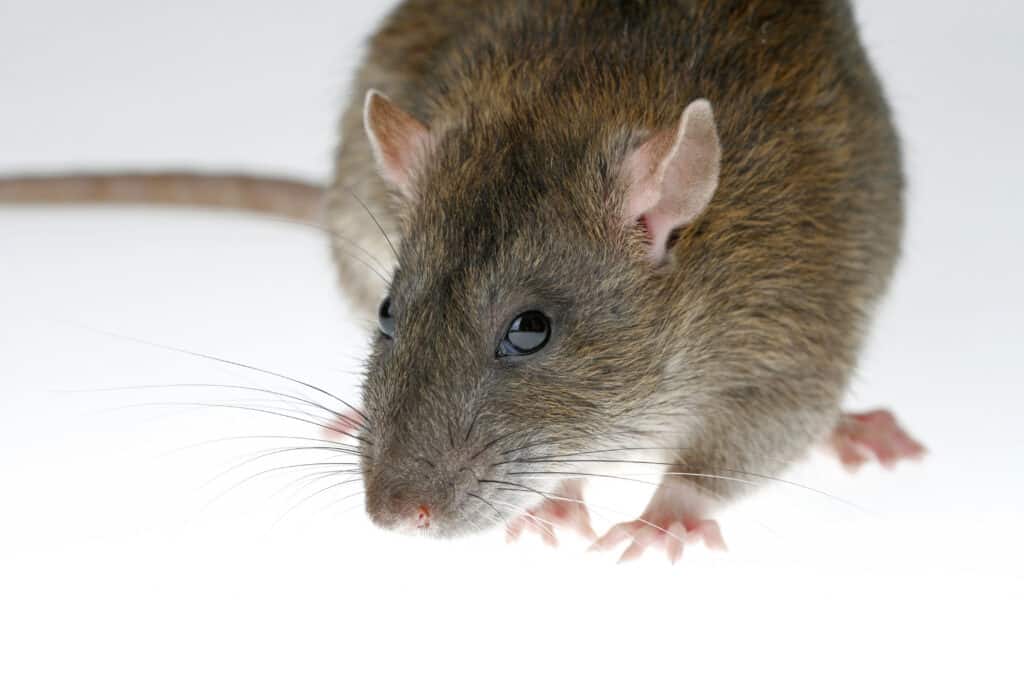
©Holger Kirk/Shutterstock.com
Rodents such as rats can carry many diseases. These diseases can be passed to people through contact with rat urine or feces, or through ingestion of food or inhalation of air that is contaminated with rat waste. According to the Centers for Disease Control & Prevention (CDC), illnesses that rats have been known to carry include tularemia, Lassa fever, hantavirus, leptospirosis, and monkeypox.
Rats can also carry a variety of bugs, including lice, mites, and ticks. These insects can spread diseases from rats to people by biting. Diseases spread indirectly from rats to people in this manner include Lyme disease, borreliosis, flea-borne typhus, and most infamously, the plague.
In addition to disease, rats can also cause serious damage to homes. Rats chew on electrical wires, which can cause sparks and electrical fires inside the walls of a house. They dislodge insulation as they gather it to use as bedding in their nests. Additionally, feces and urine can damage flooring, furniture, and carpeting.
Because of all of this, keeping rats out of your house is important. But how can you tell if you have rats in your home? Here are seven signs there are rats in your attic.
1. Rat Urine Odor
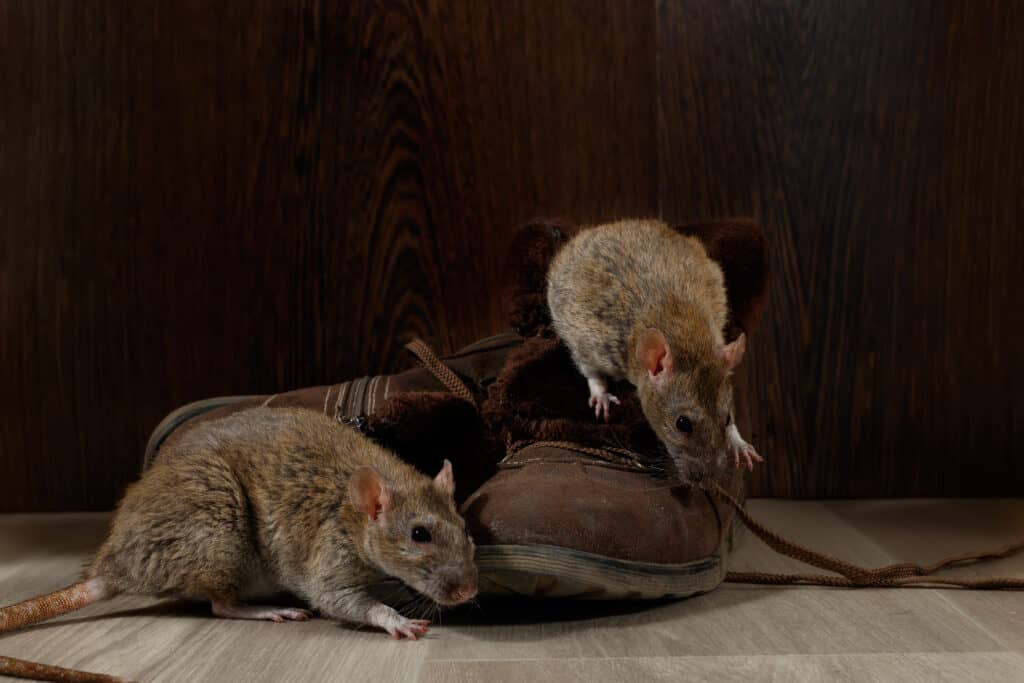
©torook/Shutterstock.com
You will probably smell a rat before you see one. Since rats are nocturnal and are most active at night, you may not see rats in your home — but that doesn’t mean they aren’t there. One big sign there are rats in your attic is the smell of urine. Rat urine smells like stale ammonia, and this odor can become very strong, particularly with large infestations. If you smell ammonia, there’s a good chance rats or mice are present.
2. Droppings
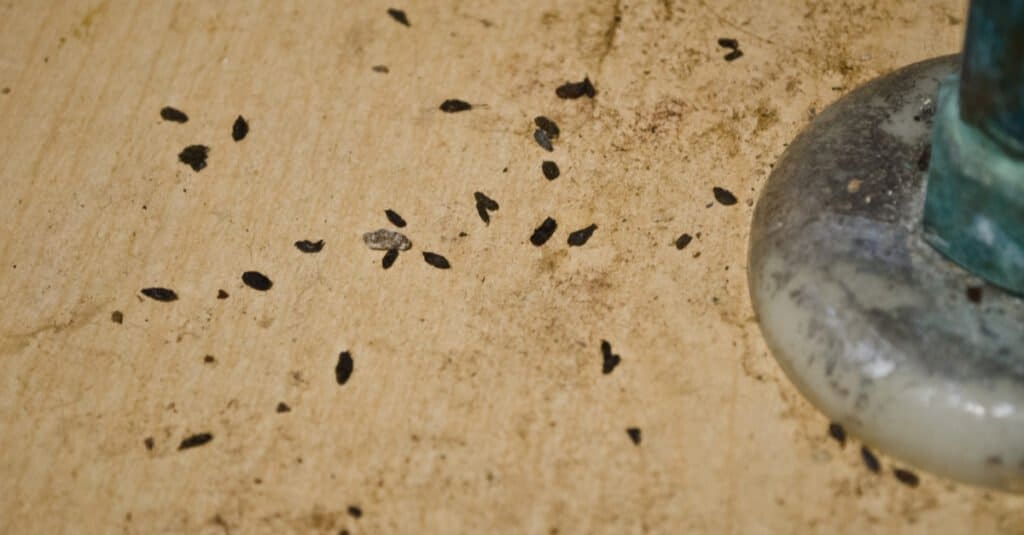
©Pegasene/Shutterstock.com
Finding rat droppings is another clear sign of an infestation. Rat droppings are approximately half an inch long. Fresh droppings are dark, shiny, and moist, while older droppings are hard and dry. Rats often defecate near food sources, so the location of droppings is an indication of where rats are frequenting to find food.
3. Gnaw or Chew Marks
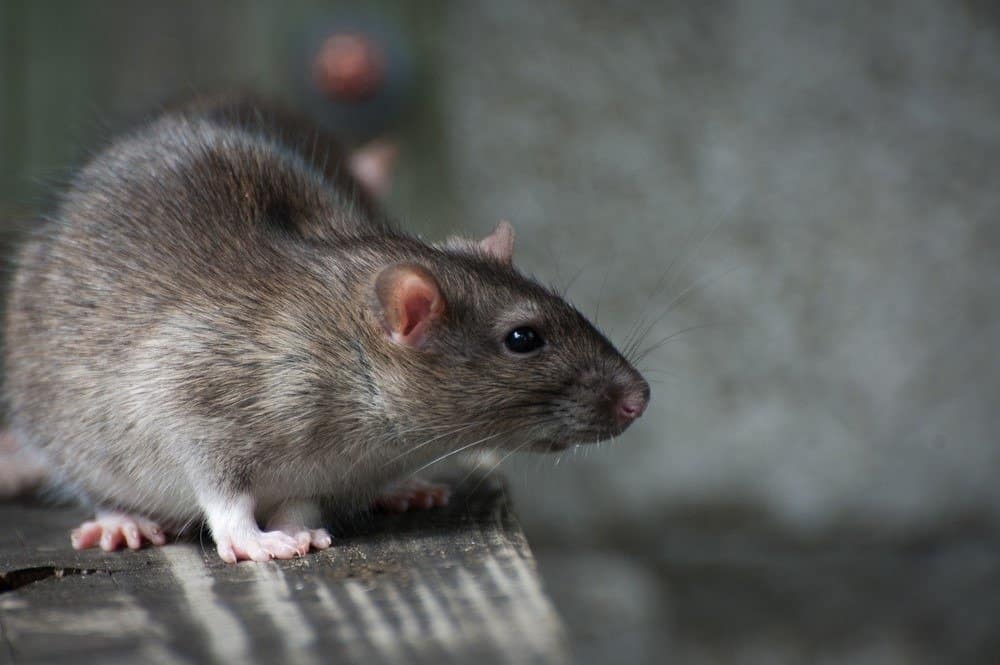
©Heiko Kiera/Shutterstock.com
Rats gnaw entry holes that are about the size of a quarter. They also like to chew through cardboard boxes or drywall in your attic. Holes are generally ragged around the edges due to chewing. Since rodent teeth are continuously growing, rats will also gnaw on wood or baseboards to wear down their teeth.
4. Noise
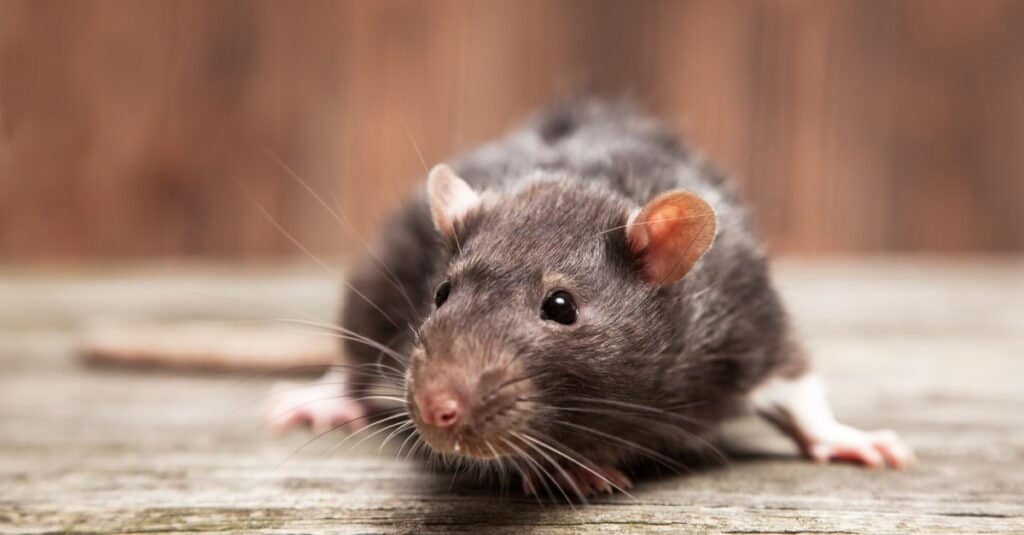
©iStock.com/GeorgeDolgikh
Hear skittering or scratching coming from inside your walls at night? It could be a sign there are rats. Rats are most active at night and like to scurry through walls. While mice will commonly squeak and vocalize, most rats communicate at an ultrasonic pitch that humans cannot hear. If you hear squeaking, you most likely have mice, not rats.
5. Odd Pet Behavior

©eva_blanco/Shutterstock.com
If your dog or cat is behaving strangely, it may be a sign you have unwanted houseguests. Pawing under appliances or barking at walls may indicate they sense rodents. They may also have a sudden strong interest in a particular area. Since dogs and cats have better senses of smell and hearing than humans, they will often detect rats before a person knows the rodents are there.
6. Runways
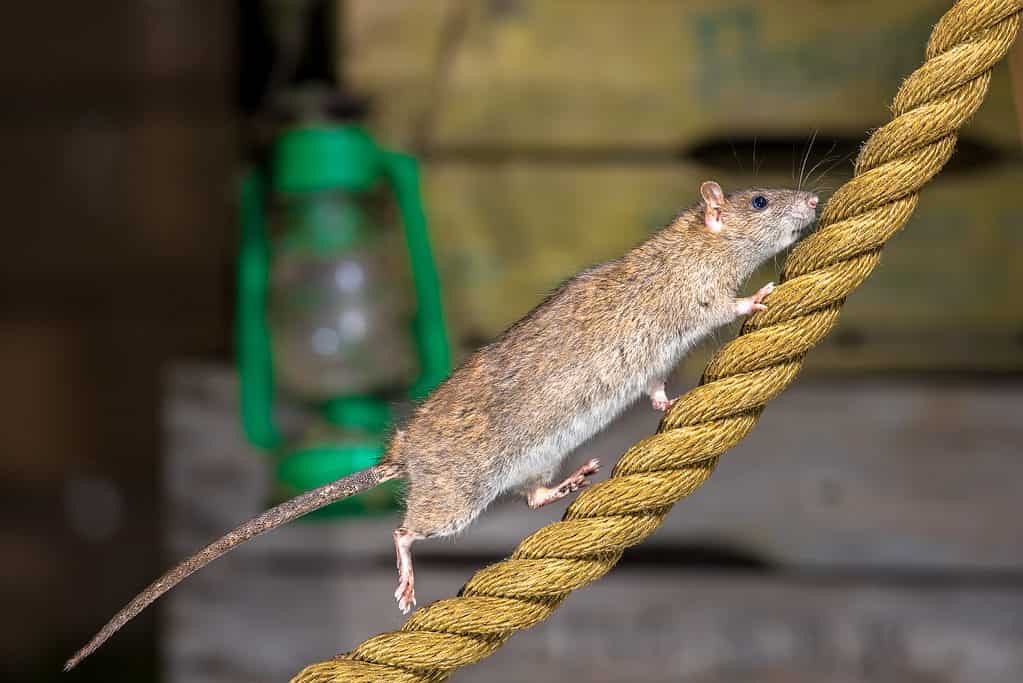
©iStock.com/CreativeNature_nl
Rodent runways are common paths that rats use to get around an attic or house. They tend to stick to the same runways, so signs there are rats build up over time. Rats leave oily marks as they repeatedly rub against walls, and may also leave dirty footprints. If you think you’ve found a rat runway, put down flour or sand to see if footprints appear.
7. Nests
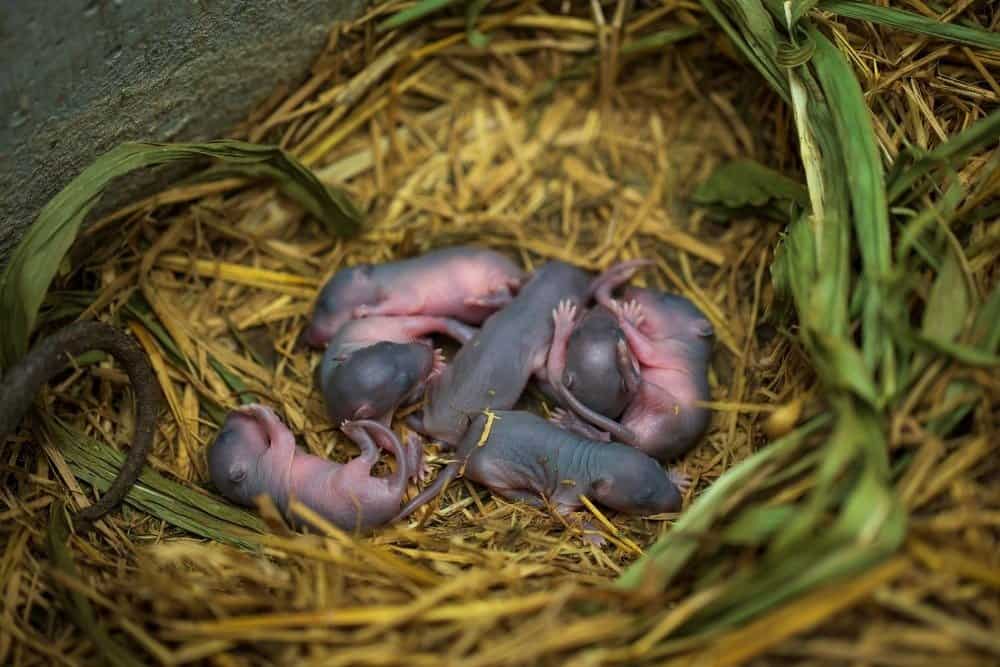
©SURAKIT SAWANGCHIT/Shutterstock.com
The most obvious sign that there are rats that have moved in is a nest. Rats are not neat nest-makers, and rat nests are often messy creations. Rats heap various materials, including insulation, shredded paper, stuffing from furniture, and trash, into a pile or round structure. They tend to nest in dark, untouched areas, so unfrequented attics or crawlspaces are popular locations.
Removal Tips
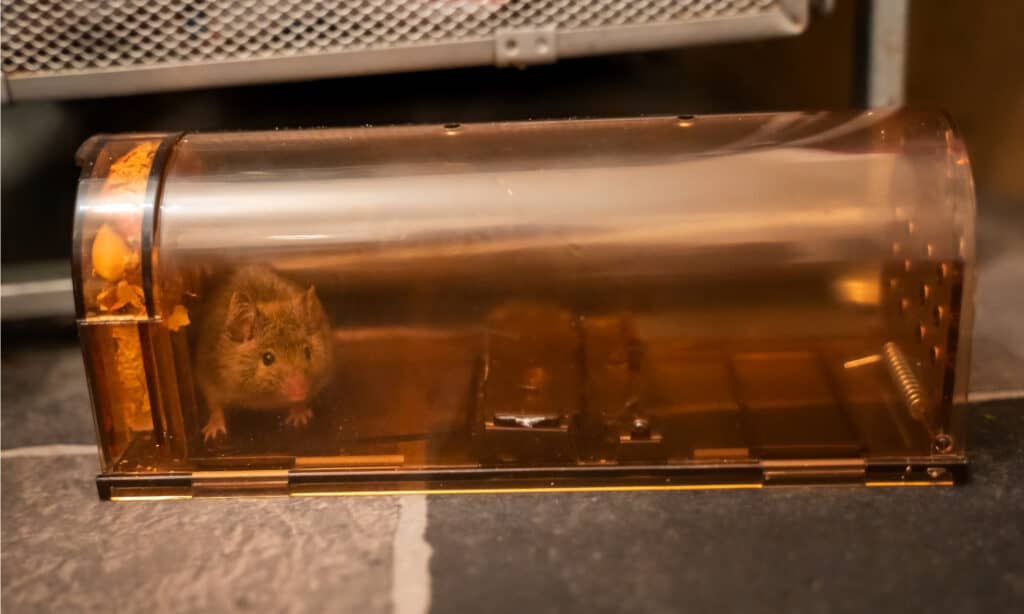
©lortek/Shutterstock.com
Once you have identified you have rats in your attic, the next step is getting them to move out. There are many ways to evict rats, though some are more humane than others. Several types of traps are available, including snap traps, live traps, and glue traps.
Live traps are the most humane, as they don’t harm the animal. These traps are boxes that are baited with food. When the rat enters, the door of the trap closes, trapping the rat. The rat can then be taken outside and released. Before releasing the rat outside, ensure that the rats’ entry points are sealed so that they cannot immediately reenter the home.
Snap traps are also baited with food and activated when a rat changes the tension when trying to get to the snack. These traps are designed to kill the rodent by breaking its neck. While the animal will die, these traps usually cause instant death without suffering. Conversely, glue traps are incredibly inhumane and cruel. Rats adhere to the sticky surface of the trap and are unable to get away. Since it doesn’t kill them, most animals end up dying of dehydration or starving to death while stuck on the trap.
Rodenticides or poison can also be used to eradicate rat colonies, but this method has downsides. While rodenticide will kill the rats, it takes 1-2 days, so it is likely that the animals will die somewhere in your attic or walls. You will then have to deal with the smell of decomposing rats. Additionally, if a rat exits the house before dying, the poisoned animal could be eaten by a domestic pet or wild animal, effectively poisoning them as well. This makes poison dangerous to all animals in the area, not just the rats.
Prevention
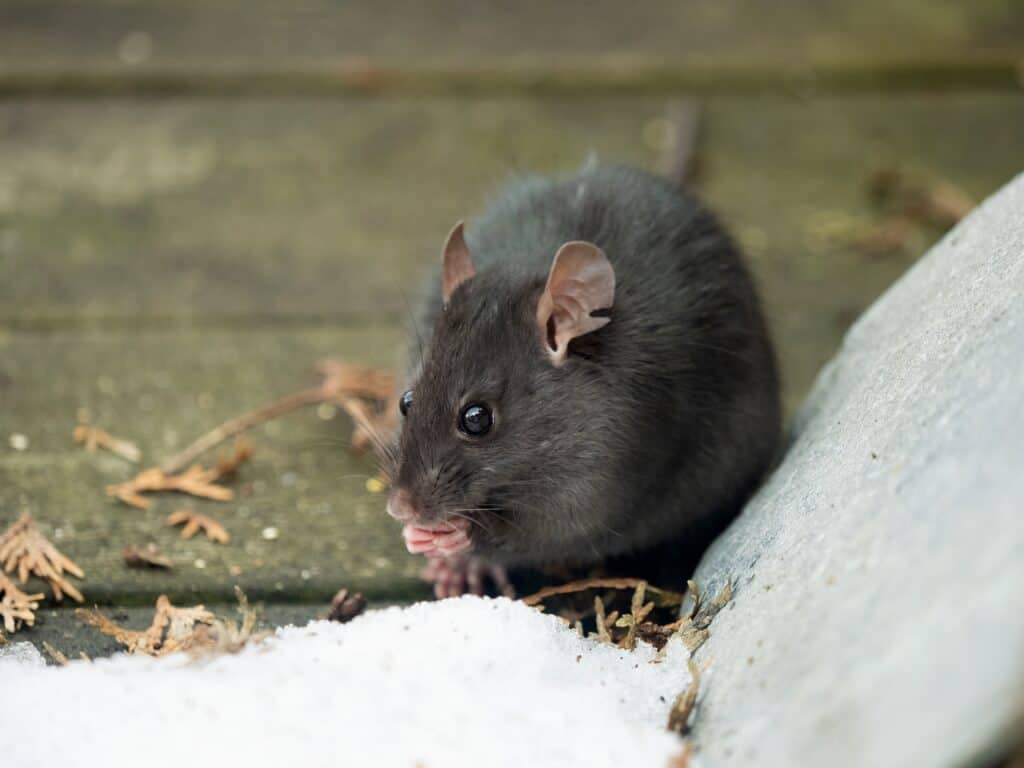
©Ernie Cooper/Shutterstock.com
The best way to deal with potential rat infestations is to prevent them from happening. Clean up trash or debris in your attic, and don’t leave food out in your home. Eliminate food sources outside of the home (such as bird feeders) to prevent rats from being attracted to your property. Finally, ensure there are no entry points into your home by filling in any holes in foundations, eaves, or rooftops. And when in doubt, call in the experts. Professional pest removal companies can assist by doing an evaluation of your home and identifying any areas of potential concern.
Summary of Signs There Are Rats in Your Attic
| Sign | What to Look For |
|---|---|
| 1. Rat urine odor | Strong ammonia smell |
| 2. Droppings | 1/2 inch droppings, dark in color |
| 3. Gnaw or chew marks | Quarter-sized entry holes or rough-edged holes in cardboard, paper, furniture, or wood |
| 4. Noise | Scurrying or scratching from within walls or from attics |
| 5. Odd pet behavior | Sudden interest in one location, pawing under furniture or appliances |
| 6. Runways | Oily streaks or dirty paw prints from repeated passage |
| 7. Nests | Messy creations made of paper, insulation, fabric, stuffing, or trash |









